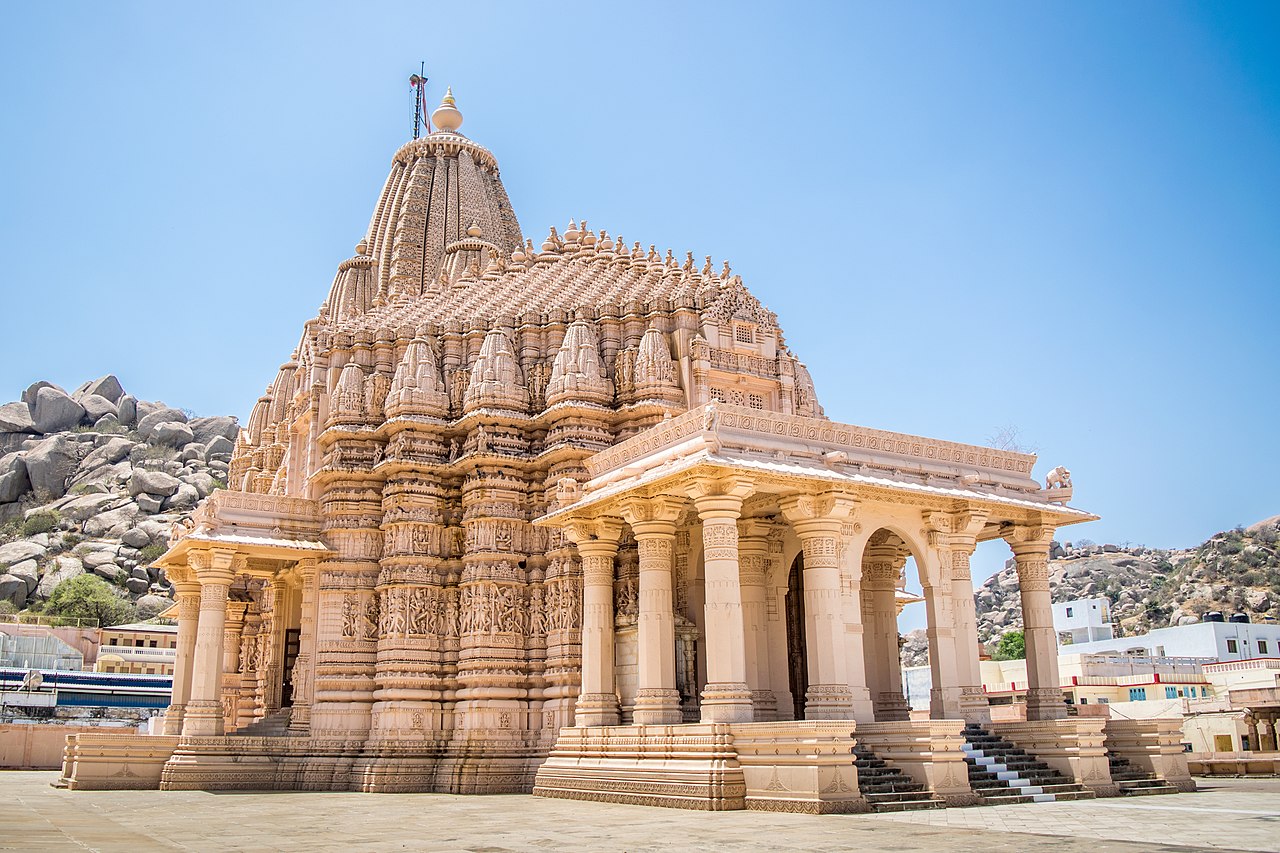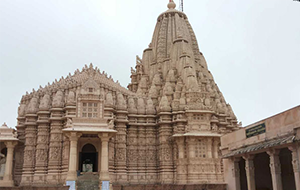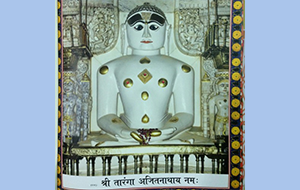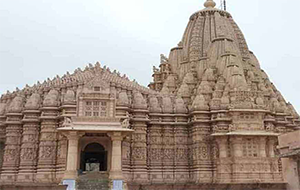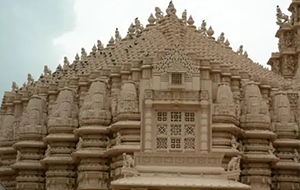Taranga is a Jain pilgrimage center near Kheralu in Mehsana district, Gujarat, India, with two compounds of Jain temples that are important examples of the Māru-Gurjara style of architecture. The Ajitnatha temple, was constructed in 1161 by the Chaulukya king Kumarapala, under the advice of his teacher, Acharya Hemachandra. Both the main sects of Jainism are represented, with adjoining walled compounds: the Svetambara compound consists of 14 temples in all, and there are also five Digambara-affiliated temples at Taranga hill.
Taranga became an important Jain pilgrimage site in the 12h century. In Kumarapal Pratibodha of Somaprabhacharya, composed in Vikram Samvat 1241, states the local Buddhist king Veni Vatsaraja and Jain monk Khaputacharya had built a temple for goddess Tara and thus the town was named Tarapur.
The hill is for the most part covered with brushwood and forest is, on the east and west, crossed by a road that lead to a plateau where stand the temples built of white sandstone and brick. The major Ajitanatha temple was built by Chaulukya king Kumarapala (1143 – 1174) after he became a follower of Jainism under his teacher Acharya Hemchandra.
In the centre of the main square of the length of 230 ft (70 m) and the breadth 230 ft (70 m), this temple is 50-foot (15 m) long, 100-foot (30 m) broad and 142-foot (43 m) high. It has a perimeter of 639 ft (195 m). The 902 ft (275 m) high wooden summit of this temple is beautifully carved.
The temple is a fine example of Māru-Gurjara style, completed in 1161, which remains largely intact, and in religious use. The shikhara and the much lower superstructure over the mandapa are both among the “most complicated” in the style. The former begins with three rows of bhumija-style miniature towers in clusters, before turning to the sekhari style higher up, where the miniature towers are of varying lengths, and overlap. Over the mandapa, the lowest level continues the regular miniature tower clusters over the sanctuary, above which shallow pitched planes of roof are studded with miniature towers, with rows of beasts and urns along the edges of the planes. The surfaces are heavily decorated with figures and “honeycomb” gavaksha decoration, the figures “characterized by lively poses and sharply cut faces and costumes”.
The red interior of the temple throws out in strong relief the 2.75 m white marble figure of Ajitnath, the second Tirthankara seated in the shrine, decorated with precious stones let into the marble. The features wear the usual expression of deep repose or quiet covert scorn. On the right hand side of the temple, there are footprints of Rishabha and of the 20 Tirthankaras and on the left hand side, there are a temple of Gaumukha, the Samavasarana, and the Jambudvipa painting. Tejpala, brother of Vastupala, installed idols of Adinatha and Neminatha in the temple. On the outer platform of the main temple, there are idols of Padmavati and Kumarapala himself.
The special times of pilgrimage are during the full moon in the months of Kartika and Chaitra (November and April). In the adjoining shrines are various images. In one is an upright block of marble with 208 representations of the Tirthankara.

